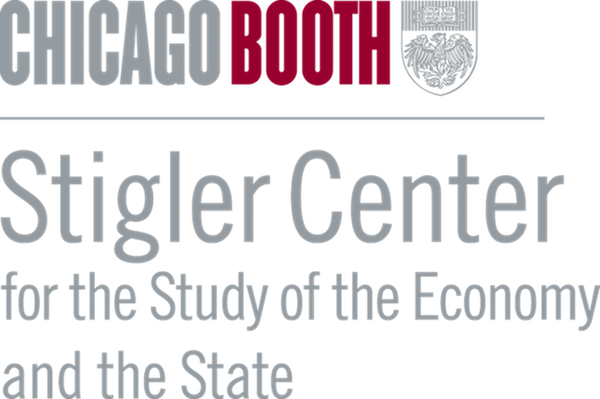The following is an excerpt from Joan Williams’ new book, “Outclassed: How the Left Lost the Working Class and How to Win Them Back,” now out at St. Martin’s Press. You can listen to Williams discuss her book with Bethany McLean and Luigi Zingales on a new Capitalisn’t episode here.
This book explains how I overcame being class blind. That’s important because being class blind doesn’t work any better than being “color-blind.” People who think they’re color-blind are actually more biased than those who don’t, because color blindness “decreases sensitivity to racism.” Class blindness is equally implausible: Americans are more likely than not to pinpoint someone’s social class after hearing them speak just seven words. Class is as inescapable in America as race; overcoming class blindness requires that you understand the power of class in American society and politics.
Class blindness fuels the “diploma divide” between Americans who graduated from college and those who didn’t. Here’s the irony: sharp increases in inequality have been accompanied by decreasing rates of support for Democrats among both white and nonwhite noncollege voters— despite the fact that far-right policies exacerbate inequality.
Democrats long prided themselves on being the party of the have-nots, depicting Republicans as the party of the haves. By 2018, the have-nots disagreed: Democrats were doing much better with voters in the top two quintiles of Americans, while Republicans were doing much better with less affluent voters.
And it’s not just the US. This is a transnational trend. Thomas Piketty has documented the striking parallels in the US, the UK, and France in the alliance between the working class and the Merchant Right (think: Koch brothers) against the Brahmin Left (think: Ezra Klein). Though I tap the large literature studying authoritarian populism in Europe, mostly I cite evidence from the US to keep this book to a manageable size. But the deep structure of far-right populism is the same transnationally. So this is not just a book about the US—or Donald Trump, though I will cite a lot of studies about his impact. Trump’s just the symptom. The real question is why his MAGA base became so passionately attached to him. (MAGA, of course, stems from his original campaign motto to “Make America Great Again.”)
You don’t need me to tell you what’s wrong with the racist, antiimmigrant, anti-science politics of the Far Right. Instead, I want to explain how class blindness on the Left helps the Right. A glaring example is when progressives deny that authoritarian populism is about class. The dictionary definition of populism is a political movement driven by anger against elites. Anger against elites is class anger. Two-thirds of Americans don’t believe class conflict is strong, which makes understanding its role in contemporary politics a stretch—one I hope to help you make.
Another gift to the Right is to deny that economic populism is about economics. Many studies from the Left purport to prove it isn’t, typically by focusing on the fact that low-income voters have not swerved right. That’s true, but irrelevant: what drives populism is precarity, not poverty. A study of three European countries found, that the voters flocking to populists are middle-status workers in routine jobs warily watching the hollowing out of the middle class. Virtually all Americans (90 percent) did better than their parents in the decades after World War II, but only half of those born in 1980 will, with particularly sharp declines in the South and industrial Midwest.
No wonder people are pissed.
My message to liberals is that we will lose elections, or scrape by so narrowly we can’t implement progressive changes, unless we can secure more votes from these middle-status voters in routine jobs feeling left behind. So if you care about climate change or abortion rights or defending democracy, you need to care about these lower-middle-class voters.
Taking a step back: How did we get here?
The short answer is neoliberalism—faith that unfettered markets would raise all boats—which dominated American politics by the 1990s. Neoliberalism posited that the best way to cure the (high-unemployment, highinflation) stagflation of the 1970s was to reinvigorate the “turgid American economy” by unleashing the power of markets (to quote David Leonhardt). The neoliberal consensus embraced free trade, outsourcing, and deregulation, while decentering unions and other job protections. Liberals as well as conservatives believed that free trade would turn China into a democracy and increase GDP throughout the world by having each nation concentrate on its core competencies to produce goods most efficiently. This dream of world freedom and prosperity was so dominant in both parties that I and other liberals used to joke we belonged to “the Democratic wing of the Democratic Party.” People saw the growing inequality in the American workforce, of course, but economists reassured most with their claims that the turf lost by noncollege grads was inevitable due to the onward march of technology. In fact, the growing inequality reflected neoliberal policies that undermined workers’ bargaining power: “the decline of unions; a succession of trade deals with low-wage countries; and increasingly common arrangements like ‘fissuring,’ in which companies outsource work to lower-paying firms, and noncompete clauses in employment contracts, which make it hard for workers to leave for a competitor.” The leftist Economic Policy Institute estimated that these policies produced more than three-fourths of the 43 percent differential between what workers earn today and what they would have earned if wages had kept pace with productivity.
The rise of economic populism reflects that neoliberalism fueled inequality both between individuals and inequality between regions, producing a new geography of wealth that fit poorly with political systems that have winner-take-all elections in geographically defined districts. This set the stage for a revolt of the regions left behind, expressed in Brexit in the UK (fueled by votes from the deindustrialized north of England) and Trump’s election in 2016 (fueled by rural areas and the deindustrialized Midwest). Far-right populism in Europe also has its greatest support in rural areas.
Often this point was lost on liberals, who, instead of recognizing the anger of areas left behind, blame them for their stupidity in voting for the Far Right. This common formula was articulated most famously by Thomas Frank in What’s the Matter with Kansas?, which depicts gullible midwesterners voting against their self-interest. Frank had changed his tune by 2016, but this brand of condescension lives on. It ignores a central fact: by electing Donald Trump in 2016, noncollege voters got precisely what they wanted, which was to smash the neoliberal consensus. Donald Trump broke with traditional Republicans who wanted to gut Social Security and Medicare, and moved both parties away from free trade, globalism, and reflexive embrace of China. Trump “abolished” NAFTA, torpedoed the Trans-Pacific Partnership, imposed tariffs on China, and announced his intention to Make America Great Again. He also said he’d raise taxes on people like himself (he lied), breaking the celebration of the rich as untouchable job creators. MAGA ended the neoliberal consensus.
Trump tapped into a narrative the Far Right had been seeding for a long time. Most progressives only know Fox News from dismissive sound bites on MSNBC or the mocking references of their favorite comedy show, but if you go back and watch Tucker Carlson during his time on Fox, you’ll see his critique of neoliberal economics. In a 2018 episode titled “There Is Nothing Free About This Market,” Carlson slammed Walmart and Uber for exploiting their workers and praised Bernie Sanders for pressuring Amazon CEO Jeff Bezos to raise wages. Media scholar Reece Peck told me, “Carlson consistently copies Trump’s greatest rhetorical trick, which is to co-opt left-populist critiques against war, wealth concentration, and corporate power to build support for the Far Right.” This is attractive to both Fox’s older viewers and younger voters who are former Democrats. In 2021, Carlson gained more Democratic viewers in the twenty-five-tofifty-four age demographic than MSNBC and CNN, a stat that “should keep Democratic strategists up at night,” Peck said.
At the height of neoliberalism, college-educated liberals’ attention shifted onto “post-materialist” concerns like gender and environmental issues. As of the 1980s, and as late as 2000, white college grads placed about twice as much weight on culture wars issues as those without college degrees. It was college grads, not non-elites, who started the culture wars. White college grads traditionally had voted Republican at higher rates than noncollege whites from the 1950s to the 1970s, but the new focus on cultural issues changed that. College grads’ new focus on cultural issues orphaned noncollege voters, who tend to be economically progressive but culturally conservative, creating what political scientists call the “representation gap.” That persisted until far-right populists from Donald Trump in the US to Giorgia Meloni in Italy to Viktor Orbán in Hungary stepped in to fill that void.
The cultural piece is important. “Many liberals continue to believe that a full-throated support of ‘economic populist’ materialist-distributive policies is all that is needed to defeat the cultural populist identity politics of the right,” notes Reece Peck. But class identity is expressed not only through economics but also through cultural differences. As the French sociologist Pierre Bourdieu pointed out in the 1970s, people from different classes have different values, different traditions of talk, and different attitudes toward tradition itself. A zillion focus groups and surveys keep rediscovering over and over again bits and pieces of what’s been called the class culture gap between elites and non-elites—without understanding how the logic of life differs for each group. It’s less gap and more like parallel universes.
Culture wars began with fights over the Equal Rights Amendment and busing, but the Right has long since learned how to turn anything into a culture war, from climate change to COVID response to religion to election procedures to gun control to abortion rights to LGBTQIA+ youth.
From “Outclassed: How the Left Lost the Working Class and How to Win Them Back” by Joan C. Williams. Copyright © 2025 by the author and reprinted by permission of St. Martin’s Publishing Group.
Articles represent the opinions of their writers, not necessarily those of the University of Chicago, the Booth School of Business, or its faculty.






